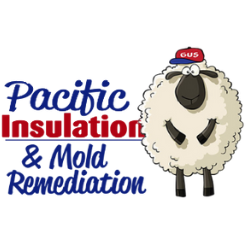Have Insulation Questions?
Call Gus to Learn MoreFrequently Asked Questions
-
What are the benefits of updated attic insulation?
As much as 85 percent of the heat lost in a house passes through the attic. In fact, the U.S. Department of Energy estimates that boosting attic insulation can lower heating costs by 10 to 50 percent (depending on the current level of insulation). Eliminating heat transfer to the attic not only keeps the heat in the house but it helps limit cold air from being drawn into the house as the heat escapes through the ceiling.
-
Which insulation should I choose?
Loose fill is ideal for attics because it settles into all the little nooks and cavities, particularly with Cellulose which only becomes denser as it settles. Fiberglass batt is perfect for applications like floor insulation or wall insulation but when it comes to an attic where the insulation is directly exposed to the cold air in an attic we highly recommend blowing in an R-49 or R-60 with cellulose.
-
What is insulation made of?
he two common types of loose fill insulation used in attics is Fiberglass and Cellulose. You'll need a thicker layer of fiberglass than other materials, and it can irritate the lungs and skin plus in extreme climates like ours, Fiberglass can lose a portion of its R-Value. Fiberglass doesn't block air as well as other materials either. Cellulose is made from recycled paper products. Loose-fill cellulose insulation can settle around and conform to most of the obstructions found in walls and attics. Loose-fill cellulose is relatively inexpensive, yet still has an R-value of about 3.5 per inch of thickness, compared to fiberglass' R-value between 2.2 to 2.7 per inch. “As a demonstration of cellulose insulation's fire-retarding capacity, it is possible to use a blowtorch to warp a penny resting on a bed of cellulose insulation held in your hand. Not only does the cellulose remain unaffected even while the penny begins to melt, but the insulating value of the cellulose is such that no heat is felt by the hand holding the experiment.”
https://www.thespruce.com/cellulose-insulation-basics-1821904
-
Do I need to remove existing insulation?
Attic insulation is periodically removed due to smoke damage, rodents, or mold but typically there’s nothing wrong with the existing insulation, you just need to add more.
-
What is R-value?
R-value is a measurement of the material's resistance to heat flow based on how thick the insulation is and what it is made from. Greater values mean better heat flow resistance. R-value recommendations for attics match the building codes for Spokane at R-49, but with the summers in Spokane & Cda getting hotter and energy costs continually rising we recommend considering an R-60 if you plan to stay in your home. You can check the ENERGY STAR recommendations for your area.
-
Could my home have asbestos insulation?
Homes built before 1990 may contain asbestos insulation, which requires professional removal. This insulation looks grainy and loose with shiny flecks.
-
How do I apply for the rebates offered by Avista or Kootenai Electric Cooperative?
Look at the rebates page on this site. There are links to each of the utility companies that go directly to their rebate forms which outline the program stipulations for each utility. The 2 big ones are that your current R-Value must be below R-12 and the insulation must be installed by a licensed insulation contractor. The rebate can either be credited toward your Avista account or they will mail you a check 6-8 weeks upon receiving the paperwork (which we will supply upon completion with the invoice).
-
How much insulation should I have in my attic, walls and floor?
Current building code requires at least at R-49 for attic insulation in our climate code. Attic insulation depth is based on what type of insulation material you decide to use whether that be fiberglass insulation blown-in, fiberglass batt or blown-in cellulose. To reach an R49 with blown-in fiberglass requires roughly 16.25". Owens Corning makes an R49 fiberglass batt that is 14" thick. We recommend and install contractor grade cellulose manufactured by Green Fiber that reaches that R49 threshold at a little over 14". We here at Pacific Insulation believe that the best insulation for attic is cellulose insulation with an r-value of R60. Floor insulation gets installed from inside the crawl space under the house and is typically an R30 Kraft faced fiberglass batt. We install these into a 2x10 or 2x12 floor joists.
-
What are the odds my home needs insulation?
Describe the item or answer the question so that The odds are high, especially if your home was built before 1977 when the first energy codes were enacted in Washington. In the 10 years that we’ve been serving Spokane & Cda we’ve been in a few attics so we can usually tell, based on the time period the house was built , what the existing insulation looks like.
-
Why does my house feel a lot hotter this year than it was before I got my new roof?
We get a lot of calls like this one. Usually the answer has to do with the color and composition of a new roof. If you previously had a cedar shake roof and had a new composition shingle installed, the shingle is denser and holds a great deal more heat than the cedar shake. Additionally the life of your new roof will increase by having proper attic ventilation or fans to mitigate the increased attic temperature as a result of the new roof.
-
What insulation is recommended for the attic?
We recommend using blown cellulose for updating attic insulation because regardless of the temperature outside cellulose maintains its R Value, is made of over 85% recycled paper products and is treated with boric acid. Boric acid contributes to the benefits of cellulose with exceptional qualities of heat resistance, fire resistance and insect & mold resistance. Boric acid isn’t known to be hazardous and is used in some medications and personal care items, like soaps and detergents.
-
What is the recommended R Value for attic insulation?
The IBC insulation requirements for our climate code is an R49 which represents a little over 14" of blown cellulose with the Green Fiber product that we use. Depending on how long you plan to stay in your home, it may be worth considering an R60 as energy prices continue to rise.
-
What is the best insulation for an attic?
Keep in mind that we are bias becauase we've heard our customers experience with cellulose. In fact when I installed attic insulation into my home and garage I used blown cellulose from Green Fiber and blow in an R60 for the house and an R38 for the garage. There are a few videos at the bottom of the page that outline the benefits of using cellulose.
-
What is the difference between cellulose insulation vs fiberglass?
Attic insulation is one of the best energy saving measures you can make to your home. Attic insulation creates a thermal barrier between your living space and the cold or hot attic above. Attic insulation will also mitigate moisture by reducing heat transfer to the attic. There are two main types of insulation material used for blown-in attic insulation, fiberglass and cellulose. Fiberglass and cellulose are both used for thermal attic insulation and come in a range of r values depending on blown-in insulation depth.
Current blown-in fiberglass is a white fluffy material and needs to be blown in using a special machine. The bags are cut open and dumped into a hopper that breaks the fiberglass into a fluffy "feather-like" consistency. The material is then fed into a blower cavity where air is injected into the material and blown-in to the attic. Fiberglass insulation blown-in as attic insulation slows the spread of heat, cold, and sound in structures. The blown-in fiberglass does this by trapping pockets of air inside the body of the insulation material. Limiting the amount of air coming into and leaking from a home can work to make a home comfortable. It's important to note that fiberglass limits the air movement, but doesn't stop it completely. Unfortunately this makes blown-in fiberglass prone to a reduction in r value in extreme hot or cold temperatures so even if it was the cheapest insulation for attic it does not provide the best insulation for attic. Moisture is hard on fiberglass and damp fiberglass can lose a large percentage of its r value.
Cellulose insulation offers more r value per inch of depth than fiberglass. It takes 12” thickness or more of Fiberglass to secure an R-30 rating while Cellulose insulation material only requires the thickness to be 8.1” to gain the same R-30 rating. The loose-fill version of cellulose insulation can be blown in attic cavities with the help of special blowing machines. The tiny particles of plant fiber form an effective insulating material, which conforms to most structures and spaces without disturbing or dislocating the finish. "A type of plant fiber, cellulose insulation can make your home more soundproof and draft proof than before. It has a high R-value, which essentially means that it can effectively resist heat flow to keep your home warm during winters and cool during the summer. The high r value of cellulose is because cellulose insulation is mainly made from recycled paper, which comes from wood fiber and wood fiber has naturally incredible insulation qualities. The cellular structure of wood is, by nature, quite resistant to the conductive flow of heat."
https://www.attainablehome.com/cellulose-insulation-pros-and-cons/
-
Why is there no insulation in my garage?
During initial construction of a home the garage is left uninsulated because it is considered a non-conditioned area, meaning that there is no heat source or air conditioning in the garage. Because the building code doesn't require attic insulation, most new home builders forego the expense of insulation in the garage.
Keep in mind that the measures to insure proper installation of insulation in the garage are identical to measures taken for the house. The most important consideration for blowing insulation is the ventilation. Ventilation removes both heat and moisture from the attic so ensure the baffles are installed for the soffit vents around the perimeter of the attic.
Setting appropriate expectations for performance is crucial. Insulation in the garage will help contain the heat coming of your engine and transmission after driving in the winter but I wouldn't expect it to keep the garage warm overnight without a heat source. The biggest benefit I noticed bu insulating the garage was that cellulose insulation will help keep the summer attic heat from radiating down through the sheetrock and super heating the garage. If your garage roof is exposed to direct sunlight from Noon to 6pm in the summer, you know how hot the garage can get. Cellulose attic insulation creates a thermal fiber barrier between the superheated attic space (sometimes as high as 135 degrees) and the living space below.
-
What happens if the attic is not vented properly?
Proper attic ventilation is the #1 most important factor in mitigating moisture problems and removing excess heat from the attic in the summer. If an attic is not properly ventilated, whether caused by a lack of vents or blocked vents, ice dams can form in winter, the HVAC system can become overworked and the underside of the roof sheathing can develop mold or mildew. The first thing we do is check the perimeter of the attic to make sure your soffit vents aren't blocked and then we install cardboard baffles that create an air channel from the soffit to up above the forecasted depth of the insulation.
-
How do you prevent moisture in your attic?
In order to stop condensation (and frost) from developing in your attic you need to do 3 things:
Eliminate or reduce air leakage into the attic.
Improve attic insulation.
Improve attic ventilation.
Ensure bathroom & dryer vents are routed outside.
-
Is there a tax deduction for insulation?
If you add to your home's insulation, you can receive a tax credit of 10% of the cost up to $500. Energy efficiency tax credits are only available for existing homes (not new construction or rentals) and only for your primary residence.
-
How do I prevent ice dams?
There are a couple of things to know about Ice Dams. First of all, they usually start near gutters. They can cause standing water which can be an ideal habitat for pests. If you have a gutter near your house, you may want to consider installing gutter guards. If this doesn't solve your problem, you may want to consider purchasing a homeowner's insurance policy with specific coverage for Ice Dams.
Another danger posed by Ice Dams is that they can cause your roof to begin leaking. These dams can cause damage to your roof sheathing and the framing. Additionally, they can cause mold growth, which is harmful to the respiratory system. Even worse, mold growth can be a hazard for those with asthma or allergies.
If you want to prevent Ice Dams, you must address the underlying causes. Heat loss is a major contributor to the formation of Ice Dams, so you should focus on fixing those problems first. The best way to do this is to hire a professional. Professionals have the right equipment to do the job safely and effectively.
Keeping your home well-insulated will also help prevent Ice Dams from forming. A poorly insulated home will allow warm air to escape, which increases the risk of ice dams.




